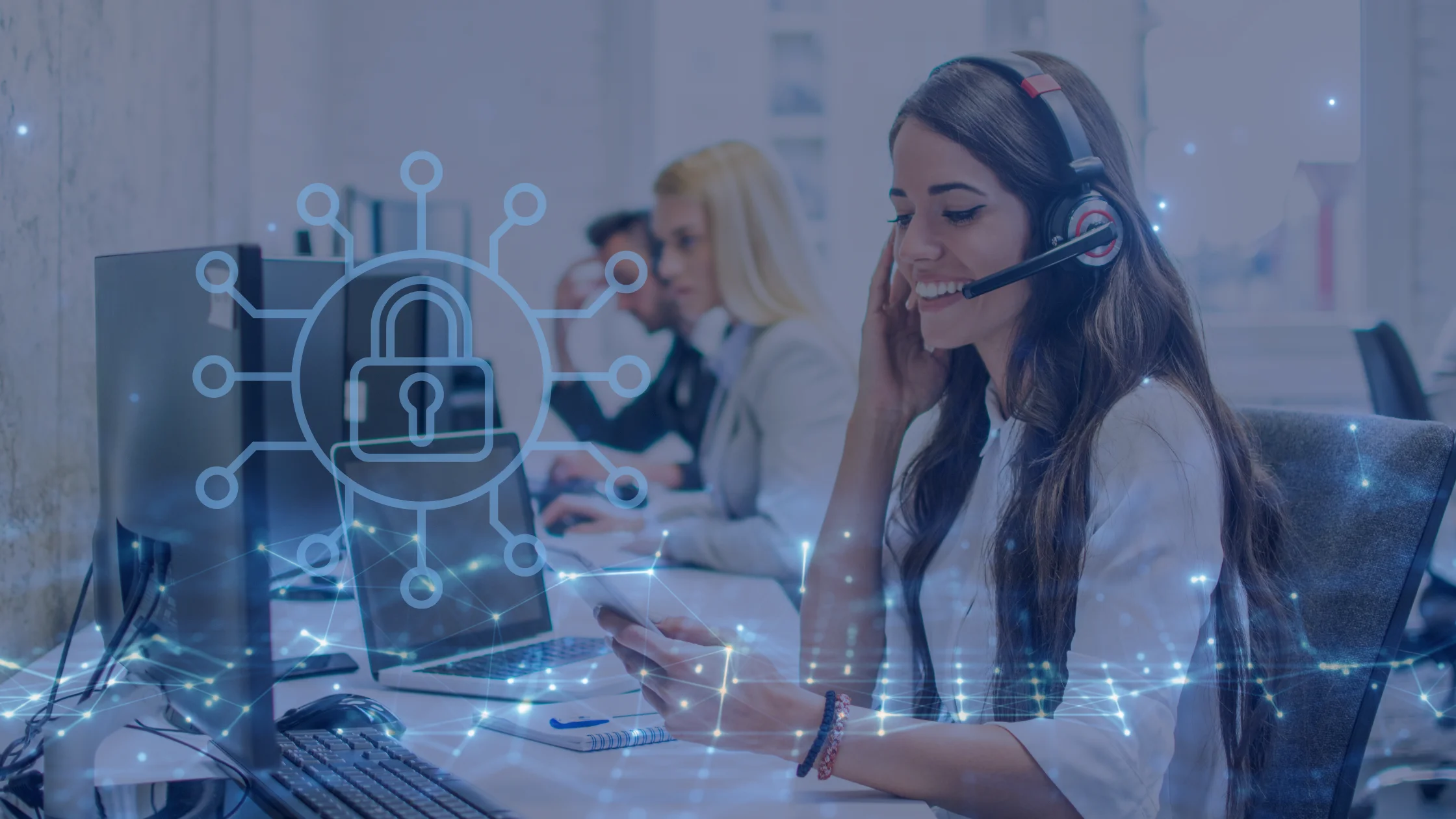
Digitalization is advancing by leaps and bounds, making cybersecurity a fundamental pillar for any company that handles sensitive information. This is especially relevant in the realm of Contact Centers, where enormous volumes of personal and financial data of customers are managed daily.
For this reason, at Plusnet Solutions, as leaders in the development and integration of technologies for Contact Centers and Customer Experience, we want to review the importance of protecting information and the key technologies that are transforming security in this sector.
Protect data and information at all costs
Cybersecurity is an increasingly widespread topic among companies in all sectors, but as we mentioned earlier, in Contact Centers, it is crucial to avoid data breaches, frauds, and other types of cyberattacks that can have devastating consequences.
According to an article by Business Insider, in Spain, we have a solid foundation to become one of the safest industries in the world, thanks to significant progress in cybersecurity in recent years. However, threats are becoming more numerous and powerful. For example, in 2020, the National Cybersecurity Institute (INCIBE) managed 133,155 cybersecurity incidents, also demonstrating the capacity to respond to emerging threats.
Contact Centers not only answer customer questions; they are also a rich source of information for both customers and companies. This reality puts them on the frontline of detecting and responding to cybersecurity threats. Each interaction, whether a call, a chat, or an email, can contain sensitive data that, if not properly protected, can be vulnerable to cyberattacks.
After all, Contact Centers handle highly sensitive personal and financial information, such as credit card numbers and social security data, which hold great value. This situation makes them an attractive target for cybercriminals. Attacks can include the theft of call recordings, real-time eavesdropping, and the illegal sale of recordings by dishonest agents, among a myriad of fraudulent uses of this sensitive information.
Statistics show that around 95% of cybersecurity breaches are caused by human error, such as opening emails with malware or clicking on suspicious links. Therefore, continuous training of agents and performance management are essential to maintaining security.
Innovation and technology join hands with cybersecurity
In this field, technological innovation has provided powerful tools that allow Contact Centers to protect their customers’ sensitive information more effectively. For example, today, there are multiple ways to use biometrics to verify the identity of customers, thus ensuring more secure and precise authentication. These innovations not only enhance security but also optimize the customer experience, making it more fluid and reliable.
1. Biometric Identity Verification and Voice Biometrics
Biometrics is a technology that uses a person’s unique physical or behavioral characteristics to verify their identity. In the context of a Contact Center, biometrics can be used in various ways, such as voice recognition, to authenticate customers securely and efficiently.
For example, during a call, the system can analyze the customer’s voice and compare it with a previously registered sample, confirming their identity without the need for additional questions. Voice biometrics is just one of several biometric technologies available. Other forms of biometrics include facial recognition, fingerprint scanning, and iris scanning, each offering an additional level of security and convenience. This technology not only improves security by reducing the risk of fraud and identity theft but also makes the customer experience faster and more convenient.
Specifically, voice biometrics, which we have already implemented at Plusnet for some of our major clients, stands out for its ability to authenticate users non-intrusively during calls, providing an extra layer of protection against fraud and identity theft.
This technology uses a person’s unique voice characteristics to authenticate their identity. By comparing voice patterns with a previously stored database, Contact Centers can verify customers’ identities quickly and accurately, reducing the risk of fraud and identity theft. In summary, this technology, which allows your voice to be your password, is becoming a crucial tool for improving security in many customer service processes such as signing contracts remotely, confirming money transfers, and entering into service agreements, among many others.
If you want to learn more about this technology, we invite you to watch our video, where we explain the operation and use of Voice Biometrics in Customer Service and Customer Experience:
2. Data encryption and multifactor authentication
Another way to protect customers’ sensitive data and information in a Contact Center is encryption. This essential technique protects sensitive information by converting it into an unreadable format for unauthorized persons. By encrypting data both in transit and at rest, Contact Centers can ensure that customer information remains secure, even if intercepted by cybercriminals.
Multifactor Authentication (MFA) adds an additional layer of security by requiring users to provide two or more forms of verification before accessing systems or sensitive information. This can include something the user knows (like a password), something they have (like a security token), and something they are (like their fingerprint or voice). Implementing MFA helps prevent unauthorized access, even if one form of verification has been compromised.
3. Monitoring and threat detection
Continuous monitoring of networks and systems is also vital for detecting and responding quickly to any suspicious activity. Advanced threat detection solutions can identify anomalous behavior patterns that could indicate an ongoing attack. By responding proactively, Contact Centers can mitigate risks before significant damage occurs.
In summary, technological innovations are playing a crucial role in improving cybersecurity in customer service and Contact Centers. From voice biometrics to data encryption and multifactor authentication, these strategies are helping to prevent fraud and information theft, ensuring a safe and reliable environment for everyone.
After all, as the saying goes, it is better to prevent than to regret because the cost of prevention is significantly less than facing the consequences of a security breach.
Do you want to know how to implement voice biometrics and other security factors in your Contact Center? At Plusnet Solutions, we can help you. Contact us! And remember: taking care of customers’ data is taking care of the future of your company and its loyalty.

